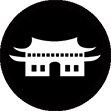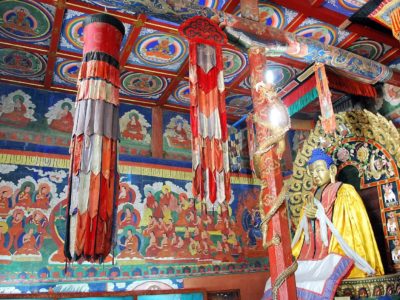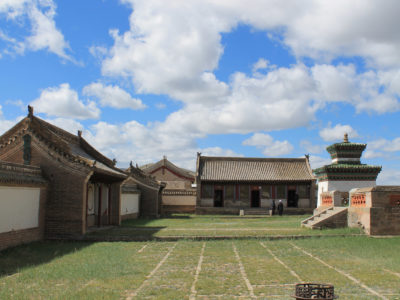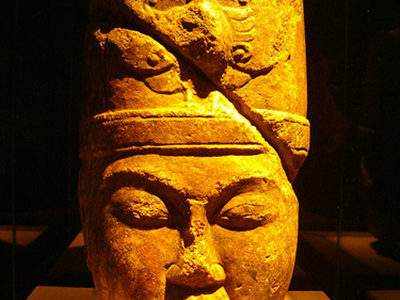Anja Camp

Meet the Yak Herders
Mongolian nomads are probably the most friendly and hospitable people in the world. You will be greeted with a hot nomadic lunch and traditional Mongolian tea. Then you will discover the secret of the Mongolian yurt (ger), and will learn how to mount the various elements of the ger, such us mesh walls, floors, two central posts, the circle, how cover the felt, and you will live a few days in the same yurt that you have built. Inside the yurt, you will find a very beautiful environment with mysterious ornaments and motifs which adorn all elements of the yurt, including the furniture.
In the afternoon, enjoy some hiking and photographing the charming landscape and wildlife; you may also enjoy tea and some chat with the family, or read a book around the family yurt. You will spend the day in your host family to discover the nomadic lifestyle. You will have one full day to observe what nomads do daily, to learn their customs and traditions, and to taste home cooked meals. You can also volunteer to help nomads milk animals, fetch water, prepare drinks, regional dishes, traditional cookies and dairy products, tend to livestock, gather horses while riding on horseback, play traditional games, and even distill traditional Mongolian vodka. According to local customs, tasks around the camp are given to women and those outside the camp are performed by men.

Erdene Zuu Monastery
The Erdene Zuu Monastery is the oldest monastery of the Gelugpa sect of Tibetan Buddhism in Mongolia. Adjacent to the ancient city of Karakorum, it was founded in 1586 by Abtai Sain Khan, and for many centuries, it was the main religious, intellectual and political center of Mongolia.
The monastery is surrounded by a stone wall with 108 stupas (monuments usually housing sacred relics associated with the Buddhist Gods). Stones from the nearby ruins of the ancient capital of Karakorum were used to build the wall.
The Erdene Zuu Monastery was badly damaged several times. For the first time, it was during the war in 1680, after which it got reconstructed in the 18th century. By 1872, the monastery was composed of 62 temples and housed a thousand of monks. However, it fell victim again to the Communist purges at the end of the 1930s. Only the exterior wall with its 108 stupas and three small temples survived the destruction. In 1947, the monastery was converted into a museum. One researcher claims that the US President Franklin Roosevelt had pressured Stalin to spare the monastery from total destruction. After the democratic revolution in 1990, the Erdene Zuu was turned over to the lamas and became a place of worship once again. Today it’s an active Buddhist monastery as well as a museum visited by tourists.
The Erdene Zuu Monastery is a part of the Orkhon Valley Cultural Landscape and the UNESCO World Heritage Site. It’s located approximately 5 km from Anja Ger Camp.

Museum of Karakorum, the Ancient Capital of Mongol Empire
The Museum of Karakorum is small but highly impressive – probably the country’s best museum outside of Ulaanbaatar. Everything is beautifully designed and well displayed. The exhibits include dozens of artifacts dating from the 13th and 14th centuries that were recovered from the immediate area, plus others that were found at archaeological sites in other parts of the aimag, including prehistoric stone tools. You’ll see pottery, bronzes, coins, religious statues and stone inscriptions. There’s also a half-excavated kiln sunk into the museum floor.

Orkhon Inscriptions
The Orhon Inscriptions and the Khöshöö Tsaidam monuments are two memorial installations erected by the Göktürks in the early 8th century in the Orkhon Valley. Inscribed in the Old Turkic alphabet, they were erected in honor of two Turkic princes, Kul Tigin and his brother Bilge Khagan. The inscriptions, in both Chinese and Old Turkic, relate the legendary origins of the Turks, the golden age of their history, their subjugation by the Chinese, and their liberation by Ilterish Qaghan. In fact, according to one source, the inscriptions contain “rhythmic and parallelistic passages” that resemble that of epics.

Monument of Great Mongolian Empires
The Orkhon Valley, home to the Orkhon River, a tributary of the Selenge River, has for centuries been a place of great historical events and achievements. An area of approximately 1,220 km2 was selected for preservation by UNESCO for its historical past, and was listed as a UNESCO World Heritage Site in 2004.
Many important archaeological relics originate from here, including the Orkhon Inscriptions dating from the 7th to the 10th century and containing traces of ancient Turkic languages (old-Turkish, used by the Göktürks). These traces have been nicknamed the “Orkhon Alphabet” by archaeologists and linguists. There is also the site of Karakorum, the ancient capital of the Mongol Empire, as well as the ruins of the Uyghur Khanate and Khar Balgas. The scientist Pyotr Kuzmich Kozlov has also found several Hunnic imperial tombs in the Valley.
A hilltop monument, named Monument of Great Mongolian Empires, has been erected close to Karakorum. Offering magnificent views of the Orkhon Valley, it comprises of three panels which demonstrate the 3 biggest Mongolian empires: The Hunnu or Xiongnu Empire, the Turic Empire and the Great Mongolian Empire.

Tovkhon Monastery
A beautiful Buddhist hermitage situated on top of Khangai Mountains about 2400 m above sea level and surrounded by forest. The Temple is a perfect place for meditation. It was founded in 1654 by the first Buddhist leader of Mongolia Zanabazar, a famous painter, sculptor and scientist.

Orkhon Falls
The Orkhon Waterfall with the height of 27 meters and also known as Ulaan Tsutgalan is one of the best sights in Central Mongolia. It was formed during an earthquake and a volcanic eruption around 20,000 years ago. It is situated in a beautiful valley with volcanic rocks, deep canyons and cascades.

Hiking to a Meditation Temple with Views over the Orkhon Valley
Enjoy hiking in the hills overlooking the Orkhon Valley and along the riverside in an area almost untouched by tourism. The final destination is a small temple at the foot of mountain, also called the “Meditation Temple” because it was especially built for people who seemed to lose their way in life. People are welcome to meditate here for many days to sort out their problems and start anew.



















































